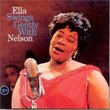| All Artists: Gustav Mahler, David Zinman, Zurich Tonhalle Orchestra Title: Mahler: Symphony No. 3 [Hybrid SACD] Members Wishing: 1 Total Copies: 0 Label: Sony Classics Original Release Date: 1/1/2007 Re-Release Date: 10/30/2007 Album Type: Hybrid SACD - DSD Genre: Classical Style: Symphonies Number of Discs: 2 SwapaCD Credits: 2 UPC: 886971291827 |
Search - Gustav Mahler, David Zinman, Zurich Tonhalle Orchestra :: Mahler: Symphony No. 3 [Hybrid SACD]
![Mahler: Symphony No. 3 [Hybrid SACD]](https://nationalbookswap.com/cd//l/85/9485/6159485.jpg) | Gustav Mahler, David Zinman, Zurich Tonhalle Orchestra Mahler: Symphony No. 3 [Hybrid SACD] Genre: Classical
|
Larger Image |
CD DetailsSimilar CDsSimilarly Requested CDs
|
CD ReviewsAn interesting addition to the catalog Rodney W. Helt | Verona. WI USA | 01/04/2008 (4 out of 5 stars) "While this recording continues to grow in my appreciation on repeated hearings, it doesn't replace my often expressed preference for both of the Bernstein renditions. Bernstein's Vienna dvd release on DG is also uniformly excellent. This release is surperbly recorded. The chorus seems to jump right out of the speakers during their entries, so realistic are their presence. I am glad that I have this recording. For the historically minded, any of Mitropoulos releases are wonderful along with the 1953 Vienna Adler air check. Unfortunatly, these are all now difficult to find. The 1960 Leipsic Scherchen recording is also interesting but eccentric. So this Zinman release is very fine, but just misses my 5 star rating." Middle of the Pack Virginia Opera Fan | Falls Church, VA USA | 01/28/2008 (3 out of 5 stars) "This is my fourth, and frankly, least favorite version of the Mahler Third in SACD format. There is nothing wrong with Zinman's performance (which is well recorded, too) it's just that there's nothing here that the SACD competitors in my collection (Chailly, Tilson Thomas, and Zander) haven't done better. I won't even get into the two channel stereo competition (Bernstein I & II, Horenstein, Leinsdorf, Solti, Tennstedt, etc.). Nothing is actively wrong with Zinman and the Tonhalle. Everything is nicely interpreted, well played, nicly sung, and beautifully recorded. It's just that there are better options. Zander's Telarc effort is my favorite, not the least for his witty and insightful commentary disc included as a freebie. He also manages to keep the vast first movement together without resorting to the rigid tempo adherence of Horenstein in his classic Unicorn effort. Chailly and Tilson Thomas both give use good performances in good sound. It's a toss up between the two, but I'm won over by Chailly's inclusion of several Bach orchestral suite excerpts orchestrated by Mahler. You certainly won't have wasted you money if you opt for Zinman - particularly since the two disc set is being sold locally at a reduced price. You won't be getting the best either." Plodding Gary Odom | 02/25/2010 (3 out of 5 stars) "I generally like Zinman's Zurich Mahler cycle, but his interpretation of 3 is not up to snuff. The sound is great, and the inner movements are fairly well done, but his first movement is plodding until the last couple of minutes, where he picks it up nicely, but loudly. The last movement also suffers from more deliberation than celebration. This is one to pass by.
My hands-down favorite Mahler 3 is by Jesus López-Cobos. Cincinnati never sounded so good. Nor has anyone else has sounded as good on M3, including Bernstein and Barbirolli, among others. (Don't get me wrong, Bernstein and Barbirolli put in fine performances. Everything is relative.) On this one, Jesus is just alright with me. ;-)" |

 Track Listings (1) - Disc #1
Track Listings (1) - Disc #1



